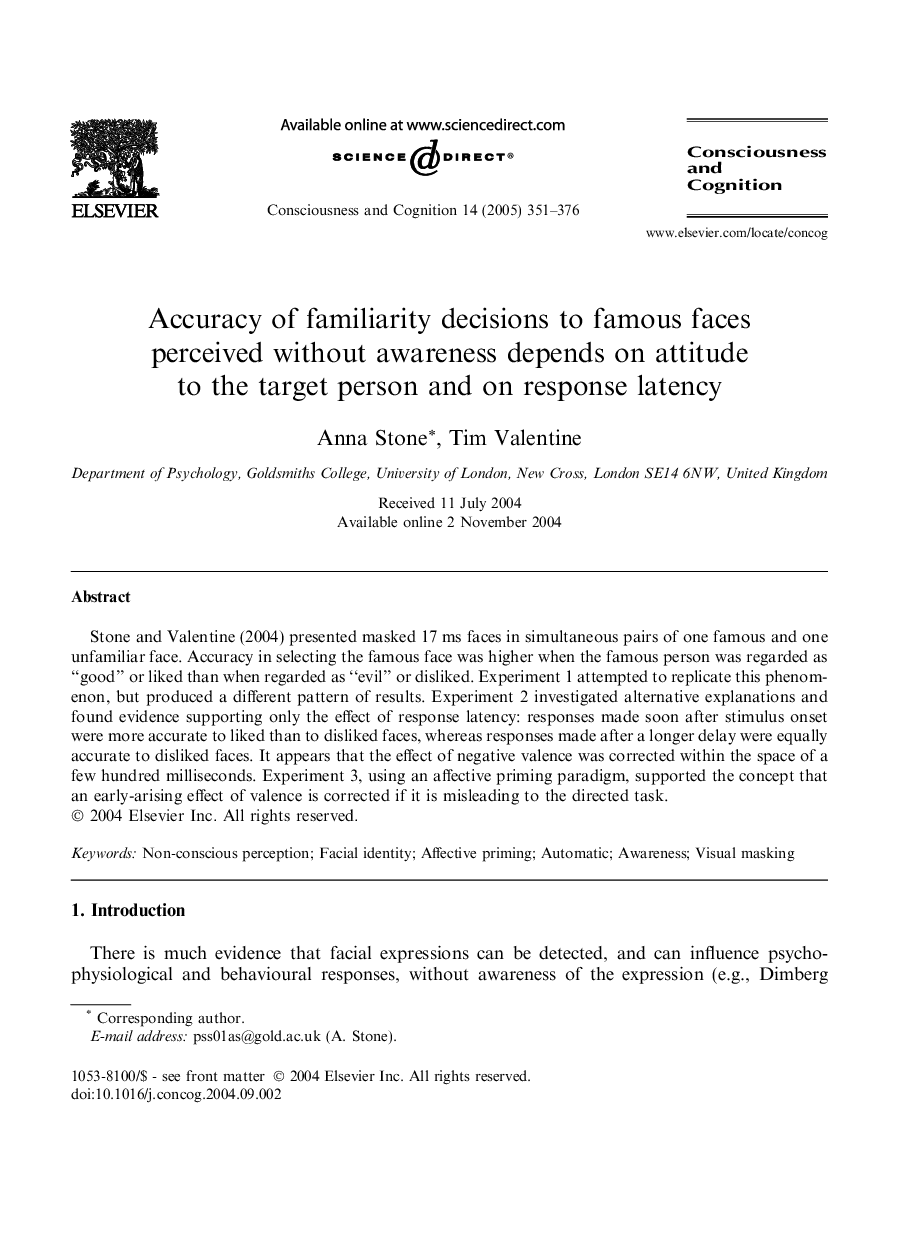| Article ID | Journal | Published Year | Pages | File Type |
|---|---|---|---|---|
| 10458922 | Consciousness and Cognition | 2005 | 26 Pages |
Abstract
Stone and Valentine (2004) presented masked 17Â ms faces in simultaneous pairs of one famous and one unfamiliar face. Accuracy in selecting the famous face was higher when the famous person was regarded as “good” or liked than when regarded as “evil” or disliked. Experiment 1 attempted to replicate this phenomenon, but produced a different pattern of results. Experiment 2 investigated alternative explanations and found evidence supporting only the effect of response latency: responses made soon after stimulus onset were more accurate to liked than to disliked faces, whereas responses made after a longer delay were equally accurate to disliked faces. It appears that the effect of negative valence was corrected within the space of a few hundred milliseconds. Experiment 3, using an affective priming paradigm, supported the concept that an early-arising effect of valence is corrected if it is misleading to the directed task.
Related Topics
Life Sciences
Neuroscience
Cognitive Neuroscience
Authors
Anna Stone, Tim Valentine,
